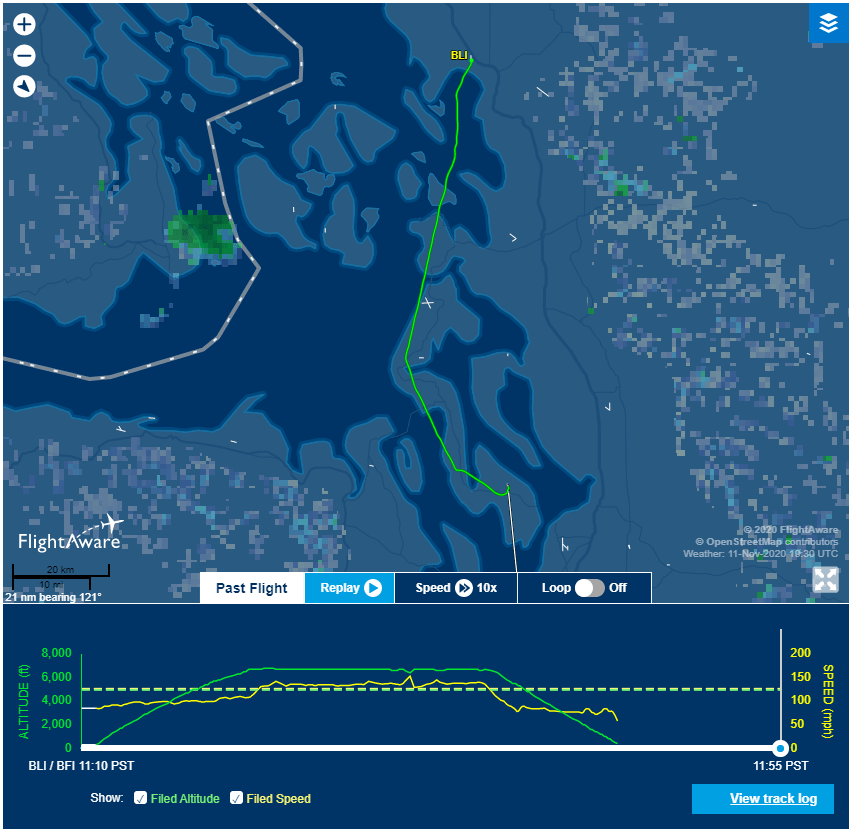On November 11, 2020, a Cessna 177 RG, with tail number N34633, lost engine power and collided with trees near the runway at Whidbey Airpark (W10), in Langley, Washington. Tragically, the two pilots on board were killed in the collision. Aviation Law Group is reviewing the accident.
The flight departed Bellingham International Airport (BLI) on a filed flight plan to Boeing Field in Seattle (BFI). The Cessna aircraft was built in 1973 and equipped with a Lycoming OV&O-360 engine.
According to air traffic control recordings, the accident aircraft declared an emergency at approximately 11:37 am local time because it suffered a loss of engine power and was unable to maintain altitude. The ATC directed the Cardinal to the nearest airport, which was Whidbey Airpark (W10).
The last position report of the aircraft was received at 11:44 am via an ADS-B receiver put the aircraft at 400 feet and 50 kts near runway 34 at W10.

There is no weather reporting station at Whidbey Airpark, nor is there on-field air traffic control. The nearest airport reported an overcast ceiling at 4,400 feet at the time of the accident.
METAR KPAE 111953Z 00000KT 10SM FEW015 OVC044 06/02 A3019 RMK AO2 SLP227 T00560022=
The Cessna aircraft was on an instrument (IFR) flight plan at the time, and after the engine lost power it likely descended through a layer of clouds. W10 is a very narrow airport that is surrounded by tall trees. It can be difficult to locate from the air, and one of the pilots here reported difficulty finding it. Evidence suggests that control of the aircraft was lost during the attempt to land, and the aircraft impacted the trees near the runway. The pilots should not have been put in this situation.
Engine failure accidents like this are of particular interest to our legal team. Engines normally do not fail without human error such as poor maintenance or product defect . This is not the first fatal accident involving this type of Lycoming engine that lost power during cruise flight. Aviation Law Group recently successfully represented the family of a passenger who was killed in a similar accident north of Seattle due to a defective carburetor that caused the engine to fail.
The NTSB is investigating this accident, and may take more than one year before its final report is out. In the mean time, Aviation Law Group continues to monitor facts as they develop.

